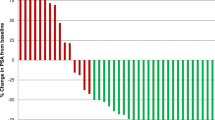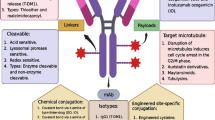Abstract
Malignant melanoma is an aggressive cancer with poor prognosis. Very late antigen-4 (VLA-4) is overexpressed in melanoma and many other tumors, making it an attractive target for developing molecular diagnostic and therapeutic agents. We compared Al18F- and 68Ga-labeled LLP2A peptides for PET imaging of VLA-4 expression in melanoma. The peptidomimetic ligand LLP2A was modified with chelator 2-S-(4-isothiocyanatobenzyl)-1,4,7-triazacyclononane-1,4,7-triacetic acid (p-SCN-Bn-NOTA), and the resulting NOTA-PEG4-LLP2A peptide was then radiolabeled with Al18F or 68Ga. The two labeled peptides were assayed for in vitro and in vivo VLA-4 targeting efficiency. Good Al18F and 68Ga radiolabeling yields were achieved, and the resulting PET tracers showed good serum stability. In the in vivo evaluation of the B16F10 xenograft mouse model, both tracers exhibited high accumulation with good contrast in static PET images. Compared with 68Ga-NOTA-PEG4-LLP2A, Al18F-NOTA-PEG4-LLP2A resulted in relatively higher background, including higher liver uptake (1 h: 20.1 ± 2.6 vs. 15.3 ± 1.7%ID/g, P < 0.05; 2 h: 11.0 ± 1.2 vs. 8.0 ± 0.8%ID/g, P < 0.05) and lower tumor-to-blood ratios (2.5 ± 0.4 vs. 3.3 ± 0.5 at 1 h, P < 0.05; 5.1 ± 0.9 vs. 7.3 ± 0.6 at 2 h, P < 0.01) at some time points. The results obtained from the mice blocked with unlabeled peptides and VLA-4-negative A375 xenografts groups confirmed the high specificity of the developed tracers. Despite the relatively high liver uptake, both Al18F-NOTA-PEG4-LLP2A and 68Ga-NOTA-PEG4-LLP2A exhibited high VLA-4 targeting efficacy with comparable in vivo performance, rendering them promising candidates for imaging tumors that overexpress VLA-4.
Graphic abstract





Similar content being viewed by others
References
Welch HG, Woloshin S, Schwartz LM (2005) Skin biopsy rates and incidence of melanoma: population based ecological study. BMJ 331(7515):481
Trinh VA (2008) Current management of metastatic melanoma. Am J Health Syst Pharm 65(24 Suppl 9):S3–S9
Mijnhout GS, Hoekstra OS, van Tulder MW, Teule GJ, Devillé WL (2001) Systematic review of the diagnostic accuracy of 18F-fluorodeoxyglucose positron emission tomography in melanoma patients. Cancer 91(8):1530–1542
Pfannenberg C, Aschoff P, Schanz S, Eschmann SM, Plathow C, Eigentler TK, Garbe C, Brechtel K, Vonthein R, Bares R (2007) Prospective comparison of 18F-fluorodeoxyglucose positron emission tomography/computed tomography and whole-body magnetic resonance imaging in staging of advanced malignant melanoma. Eur J Cancer 43(3):557–564
Rinne D, Baum RP, Hör G, Kaufmann R (1998) Primary staging and follow-up of high risk melanoma patients with whole-body 18F-fluorodeoxyglucose positron emission tomography. Cancer 82(9):1664–1671
Strobel K, Bode B, Dummer R, Veit-Haibach P, Fischer D, Imhof L, Goldinger S, Steinert HC, Von Schulthess G (2009) Limited value of 18 F-FDG PET/CT and S-100B tumour marker in the detection of liver metastases from uveal melanoma compared to liver metastases from cutaneous melanoma. Eur J Nucl Med Mol Imaging 36(11):1774
Servois V, Mariani P, Malhaire C, Petras S, Piperno-Neumann S, Plancher C, Levy-Gabriel C, Lumbroso-le Rouic L, Desjardins L, Salmon R (2010) Preoperative staging of liver metastases from uveal melanoma by magnetic resonance imaging (MRI) and fluorodeoxyglucose-positron emission tomography (FDG-PET). Eur J Surg Oncol 36(2):189–194
Choi EA, Gershenwald JE (2007) Imaging studies in patients with melanoma. Surg Oncol Clin N Am 16(2):403–430
Wei W, Ehlerding EB, Lan X, Luo Q, Cai W (2018) PET and SPECT imaging of melanoma: the state of the art. Eur J Nucl Med Mol Imaging 45(1):132–150
Xu X, Yuan L, Yin L, Jiang Y, Gai Y, Liu Q, Wang Y, Zhang Y, Lan X (2017) Synthesis and preclinical evaluation of 18F-PEG3-FPN for the detection of metastatic pigmented melanoma. Mol Pharm 14(11):3896–3905
Feng H, Xia X, Li C, Song Y, Qin C, Liu Q, Zhang Y, Lan X (2016) Imaging malignant melanoma with 18F-5-FPN. Eur J Nucl Med Mol Imaging 43(1):113–122
Ma X, Wang S, Wang S, Liu D, Zhao X, Chen H, Kang F, Yang W, Wang J, Cheng Z (2019) Biodistribution, radiation dosimetry, and clinical application of a melanin-targeted PET probe, 18F-P3BZA, in patients. J Nucl Med 60(1):16–22
Xu X, Yuan L, Gai Y, Liu Q, Yin L, Jiang Y, Wang Y, Zhang Y, Lan X (2018) Targeted radiotherapy of pigmented melanoma with 131I-5-IPN. J Exp Clin Cancer Res 37(1):306
Zhang C, Zhang Z, Lin K-S, Pan J, Dude I, Hundal-Jabal N, Colpo N, Bénard F (2017) Preclinical melanoma imaging with 68Ga-labeled α-melanocyte-stimulating hormone derivatives using PET. Theranostics 7(4):805
Froidevaux S, Calame-Christe M, Schuhmacher J, Tanner H, Saffrich R, Henze M, Eberle AN (2004) A gallium-labeled DOTA-α-melanocyte-stimulating hormone analog for PET imaging of melanoma metastases. J Nucl Med 45(1):116–123
Zhang C, Zhang Z, Lin K-S, Lau J, Zeisler J, Colpo N, Perrin DM, Bénard F (2018) Melanoma imaging using 18F-labeled α-melanocyte-stimulating hormone derivatives with positron emission tomography. Mol Pharm 15(6):2116–2122
Pohle K, Notni J, Bussemer J, Kessler H, Schwaiger M, Beer AJ (2012) 68Ga-NODAGA-RGD is a suitable substitute for 18F-Galacto-RGD and can be produced with high specific activity in a cGMP/GRP compliant automated process. Nucl Med Biol 39(6):777–784
Notni J, Pohle K, Wester H-J (2013) Be spoilt for choice with radiolabelled RGD peptides: preclinical evaluation of 68Ga-TRAP (RGD) 3. Nucl Med Biol 40(1):33–41
D’Alessandria C, Pohle K, Rechenmacher F, Neubauer S, Notni J, Wester H-J, Schwaiger M, Kessler H, Beer AJ (2016) In vivo biokinetic and metabolic characterization of the 68Ga-labelled α5β1-selective peptidomimetic FR366. Eur J Nucl Med Mol Imaging 43(5):953–963
Holzmann B, Gosslar U, Bittner M (1998) α4 integrins and tumor metastasis. In: Leukocyte integrins in the immune system and malignant disease. Springer, Berlin, pp 125–141
Moretti S, Martini L, Berti E, Pinzi C, Giannotti B (1993) Adhesion molecule profile and malignancy of melanocytic lesions. Melanoma Res 3(4):235–239
Garmy-Susini B, Jin H, Zhu Y, Sung R-J, Hwang R, Varner J (2005) Integrin α4β1-VCAM-1-mediated adhesion between endothelial and mural cells is required for blood vessel maturation. J Clin Investig 115(6):1542–1551
Schlesinger M, Bendas G (2015) Contribution of very late antigen-4 (VLA-4) integrin to cancer progression and metastasis. Cancer Metastasis Rev 34(4):575–591
Peng L, Liu R, Marik J, Wang X, Takada Y, Lam KS (2006) Combinatorial chemistry identifies high-affinity peptidomimetics against α4β1 integrin for in vivo tumor imaging. Nat Chem Biol 2(7):381
Jiang M, Ferdani R, Shokeen M, Anderson CJ (2013) Comparison of two cross-bridged macrocyclic chelators for the evaluation of 64Cu-labeled-LLP2A, a peptidomimetic ligand targeting VLA-4-positive tumors. Nucl Med Biol 40(2):245–251
Gai Y, Sun L, Hui W, Ouyang Q, Anderson CJ, Xiang G, Ma X, Zeng D (2016) New bifunctional chelator p-SCN-PhPr-NE3TA for copper-64: synthesis, peptidomimetic conjugation, radiolabeling, and evaluation for PET imaging. Inorg Chem 55(14):6892–6901
Beaino W, Anderson CJ (2014) PET imaging of very late antigen-4 in melanoma: comparison of 68Ga-and 64Cu-labeled NODAGA and CB-TE1A1P-LLP2A conjugates. J Nucl Med 55(11):1856–1863
Gai Y, Sun L, Lan X, Zeng D, Xiang G, Ma X (2018) Synthesis and evaluation of new bifunctional chelators with phosphonic acid arms for Gallium-68 based PET imaging in melanoma. Bioconjug Chem 29(10):3483–3494
Roxin Á, Zhang C, Huh S, Lepage ML, Zhang Z, Lin K-S, Bénard F, Perrin DM (2018) Preliminary evaluation of 18F-labeled LLP2A-trifluoroborate conjugates as VLA-4 (α4β1 integrin) specific radiotracers for PET imaging of melanoma. Nucl Med Biol 61:11–20
Roxin A, Zhang C, Huh S, Lepage M, Zhang Z, Lin K, Bénard F, Perrin D (2019) A metal-free DOTA-conjugated 18F-labeled radiotracer: [18F] DOTA-AMBF3-LLP2A for imaging VLA-4 over-expression in murine melanoma with improved tumor uptake and greatly enhanced renal clearance. Bioconjug Chem. https://doi.org/10.1021/acs.bioconjchem.9b00146 (just accepted manuscript)
DeNardo SJ, Liu R, Albrecht H, Natarajan A, Sutcliffe JL, Anderson C, Peng L, Ferdani R, Cherry SR, Lam KS (2009) 111In-LLP2A-DOTA polyethylene glycol–targeting α4β1 integrin: comparative pharmacokinetics for imaging and therapy of lymphoid malignancies. J Nucl Med 50(4):625–634
Zwingenberger AL, Kent MS, Liu R, Kukis DL, Wisner ER, DeNardo SJ, Taylor SL, Chen X, Lam KS (2012) In-vivo biodistribution and safety of 99mTc-LLP2A-HYNIC in canine non-Hodgkin lymphoma. PLoS One 7(4):e34404
Beaino W, Nedrow JR, Anderson CJ (2015) Evaluation of 68Ga-and 177Lu-DOTA-PEG4-LLP2A for VLA-4-targeted PET imaging and treatment of metastatic melanoma. Mol Pharm 12(6):1929–1938
Choi J, Beaino W, Fecek RJ, Fabian KP, Laymon CM, Kurland BF, Storkus WJ, Anderson CJ (2018) Combined VLA-4-targeted radionuclide therapy and immunotherapy in a mouse model of melanoma. J Nucl Med 59(12):1843–1849
Koukouraki S, Strauss LG, Georgoulias V, Eisenhut M, Haberkorn U, Dimitrakopoulou-Strauss A (2006) Comparison of the pharmacokinetics of 68Ga-DOTATOC and [18F] FDG in patients with metastatic neuroendocrine tumours scheduled for 90Y-DOTATOC therapy. Eur J Nucl Med Mol Imaging 33(10):1115–1122
Virgolini I, Ambrosini V, Bomanji JB, Baum RP, Fanti S, Gabriel M, Papathanasiou ND, Pepe G, Oyen W, De Cristoforo C (2010) Procedure guidelines for PET/CT tumour imaging with 68Ga-DOTA-conjugated peptides: 68Ga-DOTA-TOC, 68Ga-DOTA-NOC, 68Ga-DOTA-TATE. Eur J Nucl Med Mol Imaging 37(10):2004–2010
Haug A, Auernhammer CJ, Wängler B, Tiling R, Schmidt G, Göke B, Bartenstein P, Pöpperl G (2009) Intraindividual comparison of 68Ga-DOTA-TATE and 18F-DOPA PET in patients with well-differentiated metastatic neuroendocrine tumours. Eur J Nucl Med Mol Imaging 36(5):765–770
Prasad V, Ambrosini V, Hommann M, Hoersch D, Fanti S, Baum RP (2010) Detection of unknown primary neuroendocrine tumours (CUP-NET) using 68Ga-DOTA-NOC receptor PET/CT. Eur J Nucl Med Mol Imaging 37(1):67
Gabriel M, Oberauer A, Dobrozemsky G, Decristoforo C, Putzer D, Kendler D, Uprimny C, Kovacs P, Bale R, Virgolini IJ (2009) 68Ga-DOTA-Tyr3-octreotide PET for assessing response to somatostatin-receptor-mediated radionuclide therapy. J Nucl Med 50(9):1427
Hyduk SJ, Oh J, Xiao H, Chen M, Cybulsky MI (2004) Paxillin selectively associates with constitutive and chemoattractant-induced high-affinity α4β1 integrins: implications for integrin signaling. Blood 104(9):2818–2824
Acknowledgements
This work was supported, in part, by the National Natural Science Foundation of China (Nos. 81801738 and 81630049), the Fundamental Research Fund for the Chinese Central Universities of Huazhong University of Science and Technology (2017KFYXJJ235), opening foundation of Hubei key laboratory of molecular imaging (02.03.2017-187) and research foundation of Wuhan Union Hospital (02.03.2017-12). We also acknowledge the support from the National Institute of Biomedical Imaging and Bioengineering grant R21-EB020737, and the American Cancer Society Research Scholar ACS-RSG-17-004-01-CCE.
Author information
Authors and Affiliations
Corresponding authors
Ethics declarations
Conflict of interest
The authors declare that they have no conflicts of interest.
Additional information
Publisher's Note
Springer Nature remains neutral with regard to jurisdictional claims in published maps and institutional affiliations.
Electronic supplementary material
Below is the link to the electronic supplementary material.
Rights and permissions
About this article
Cite this article
Gai, Y., Yuan, L., Sun, L. et al. Comparison of Al18F- and 68Ga-labeled NOTA-PEG4-LLP2A for PET imaging of very late antigen-4 in melanoma. J Biol Inorg Chem 25, 99–108 (2020). https://doi.org/10.1007/s00775-019-01742-6
Received:
Accepted:
Published:
Issue Date:
DOI: https://doi.org/10.1007/s00775-019-01742-6




